Water Damage Restoration
Water Damage at Your Home or Business? We Can Help!

Commercial Water Damage
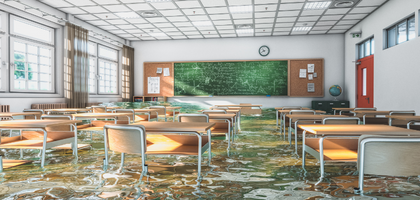
- 24/7 availability
- Fast response
- Minimize disruption to your business
- Help with insurance claim
Residential Water Damage Restoration

- Fast response
- Limit the spread of the water
- Full restoration of the damage
- Help with insurance claim
Emergency Water Damage Restoration
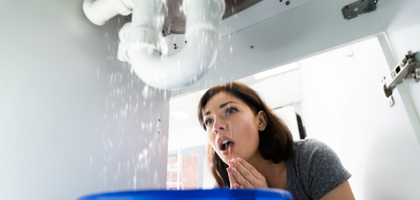
- Rapid response
- Emergency water extraction
- Structural stabilization and repair
- Full restoration to pre-disaster conditions
No matter what water damage situation you’re dealing with, we have solutions.
Water is the most common cause of property damage. That is because flooding, rain, leaks, pipe bursts, plumbing issues, overflows, appliance malfunctions, and much more can leave your home or business with extensive water damage. You need to take immediate action to mitigate the damage. Restoration Master’s professionals specialize in repairing and restoring your home or business when water damage occurs.
Water damage is not only very common, but it can also be costly:
An estimated $1.2 billion is spent annually on non-weather related water damage losses.
Water damage was the second most common homeowner’s insurance claim after wind and hail damage between 2013 and 2017.
Homeowner’s insurance paid out a total of $13 billion for water damage in North America in 2017.
The third most common claim received globally was water damage between 2013 and 2018.
The average water damage loss for commercial properties is $89,000.
A crack in a pipe that is 1/8 inch can leak 250 gallons of water per day.
The average water damage claim cost for homes is $10,234.
Common water damage causes include the following:
 Pipe Burst
Pipe Burst Flooding
Flooding Condensation
Condensation Washing Machine
Washing Machine Leaking Roof
Leaking Roof Toilet Overflow
Toilet Overflow Sewer Backup
Sewer Backup Gutters
Gutters
If your home or building is affected by water damage, you need to call a water damage professional right away to stop the spread of the water and restore the damage. RestorationMaster can help you find a water damage professional in your area in the United States to restore your property.
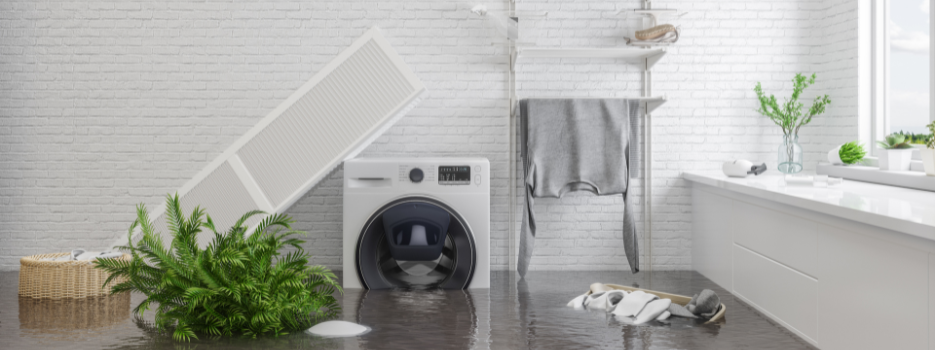
Water Damage Services
Flooded Basement

Flooded Bathroom

Leak in Ceiling
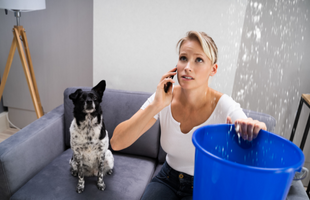
Flooded Kitchen

Flooded Hardwood Floor
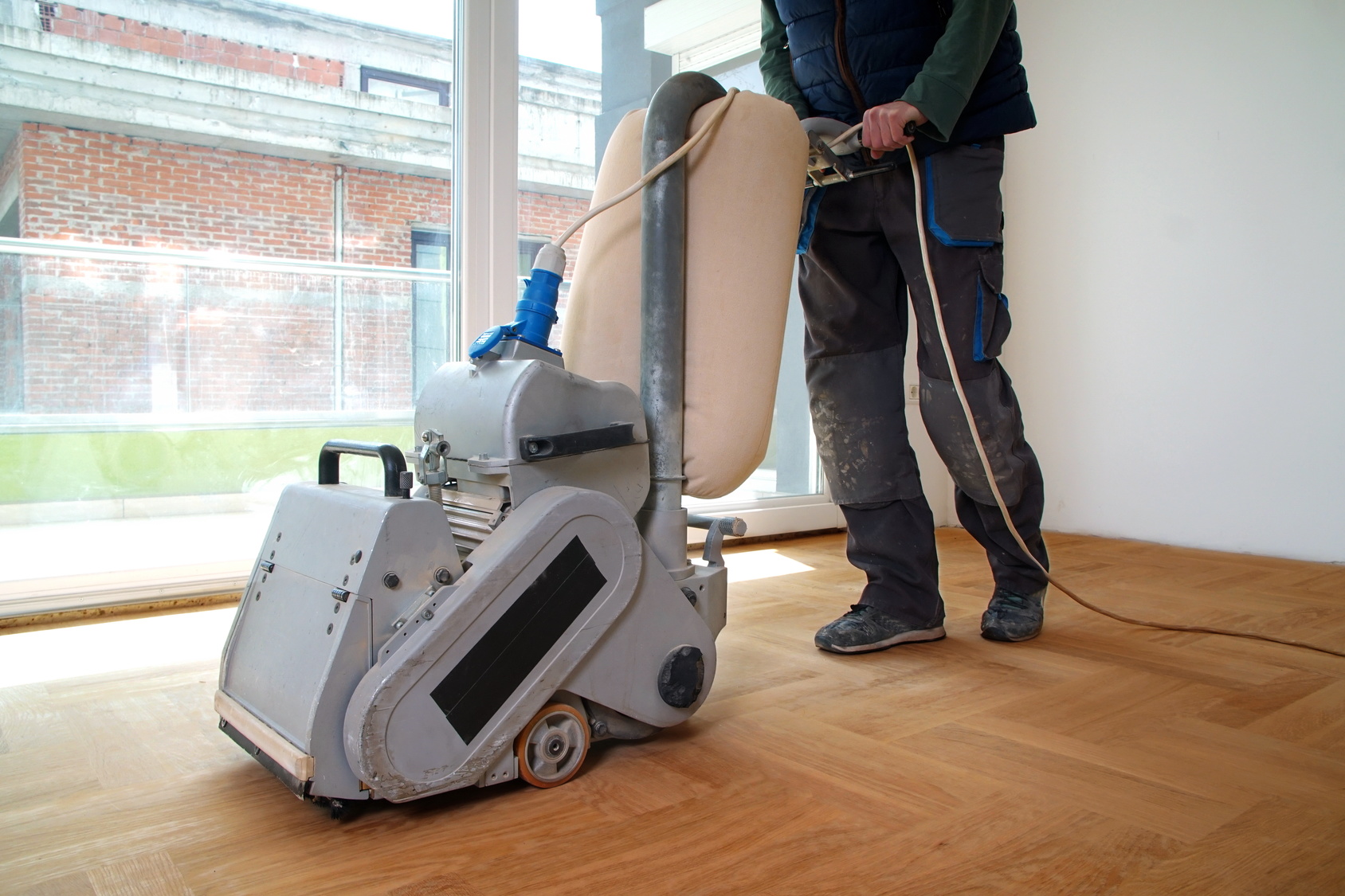
Water Damage in Walls
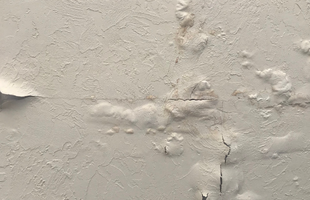
Flooding Cleanup
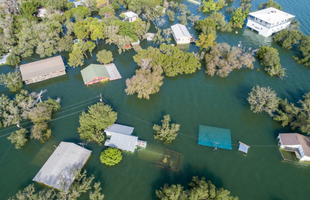
Roof Leaks
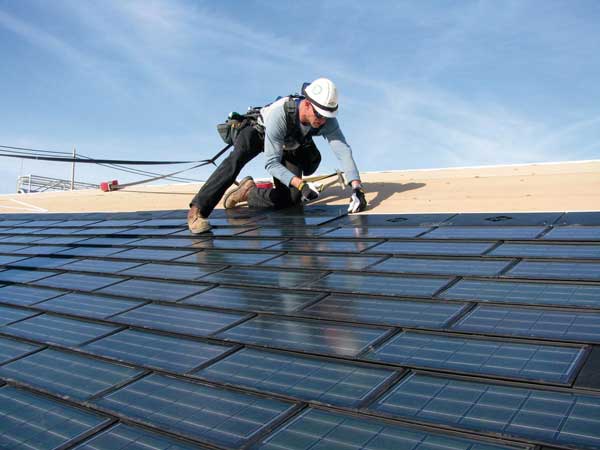
Water damage restoration, also known as water mitigation, water removal, and water damage repair, is the removal of flood water and extra moisture as well as the repair and restoration of the damaged areas and materials. For water damage restoration to be successful, the restoration professionals must first identify and address the source of the water that caused the damage.
Once the water source has been identified and fixed and the extent of the water and damage has been evaluated, restoration professionals will form and implement a restoration plan to fully dry the property and restore the affected areas to their original condition. Water removal and drying is the first important part of water damage restoration as professionals will use advanced equipment to accomplish this. Once the flood water is removed and the affected areas and materials are dried, the focus turns to water damage repair to repair, restore, and clean the damaged areas.
Water damage restoration is the effort to remove the excess water and moisture, dry the affected materials, and repair and restore the damage it caused to return the property to its pre-disaster state. Remediation involves removing the water and moisture and drying the affected areas to prevent the damage from getting worse but may not involve restoring the property to its original condition.
Water damage restoration services are performed by licensed restoration professionals and consist of several steps. First, the professionals must evaluate the damage and identify the source of the flooding or excess moisture. If possible, the water source will be fixed to prevent more water or moisture form coming into the property.
The next part of the restoration process is water removal services. Professionals use advanced water extraction equipment that removes any amount of water, including standing flood water, and they will dry the affected areas and materials with dehumidification equipment and air movers. After the water removal process, permanently damaged materials are removed while salvageable materials are repaired and restored. These materials will also be cleaned and disinfected to ensure safe conditions and prevent mold growth.
Water damage restoration services include the following:
 First Response
First Response Damage inspection
Damage inspection Water removal
Water removal Drying
Drying Water damage cleanup
Water damage cleanup Dehumudification
Dehumudification Content cleaning
Content cleaning Disinfection
Disinfection Reconstruction
Reconstruction
Contact a local water damage contractor in your area:
- Atlanta, GA
- Charlotte, NC
- Cicero, IL
- Cleveland, OH
- Columbus, OH
- Dallas, TX
- Denver, CO
- Des Moines, IA
- Elk Grove Village, IL
- Essex, CT
- Houston, TX
- Indianapolis, IN
- Las Vegas, NV
- Liberty Township, OH
- Los Angeles, CA
- Manasquan, NJ
- Mitchellville, MD
- Reno, NV
- San Francisco, CA
- South Bend, IN
- St Louis, MO
- Stoneham, MA
- Tampa, FL
- Waldorf, MD
- Westerly, RI

Why Choose Our Contractors
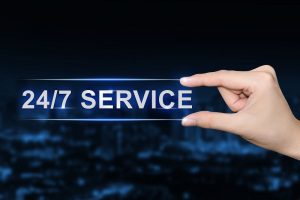
24/7 Emergency Service
When dealing with water damage, immediate action is necessary to prevent exposure to potential health risks on your property.

Highly Trained Technicians
As experts in water damage, our contractors are trained to safely clean and remove water damage and dispose it properly.

Great Client Reviews
Providing each customer with fast, competent, and compassionate service results in happy customers, trusted services, and 5 star reviews.

We Work with Insurance
While some instances of water damage may be obvious, water damage can also be hidden, such as when it occurs within walls and above ceilings. If you do not notice the signs of hidden water damage, the damage may be extensive once you realize it is there.
Common water damage signs to watch for include the following:
 Water Stains
Water Stains Moisture
Moisture Mold
Mold Leaking Roof
Leaking Roof Warping
Warping Sagging
Sagging
Water Damage Restoration FAQs
The cost of water damage will vary depending on the extent of the damage and amount of water involved. The average range of most water damage restoration projects is from $1200 to $5000 with a national average of $3000. However, water damage restoration can range from as low as $350 to as high as $50,000 depending on the damage.
Water damage costs can be estimated by average cost per square foot, which is $3.75 per square foot, $4.50 for grey water, and $7 for black water. You can get an idea of what the cost of water damage will be by determining the size of the area affected.
The True Cost of Water Damage
Call a local water damage restoration professional for emergency services or to request a quick quote.
10 Steps Used by Professionals to Restore Flooded Basements
Water damage professionals will quickly arrive to your property and begin an assessment of the damage. They will also take steps to contain the spread of the water to prevent further damage. Water damage restoration is a comprehensive service in which excess water and moisture is removed, affected areas and materials are dried, and the damage is restored to its pre-disaster state.
How to Speed Up the Flood Cleanup Process
For 11 years, RestorationMaster Finder (RMF) has worked with the top-rated water damage companies of the industry. The water restoration companies on RMF are insured, bonded, fast, affordable, and they help take care of the insurance paperwork.
Find Local Flood Cleanup Services
Basement flooding is when water from rain, sewage backups, foundation leaks, washing machines leaks, burst pipes, and other sources results in a significant amount of water accumulating in the basement. The basement is more likely to experience flooding than most other areas of a home and the flooding must be dealt with quickly to prevent serious structural damage or mold growth.
Flood water in the basement spreads quickly through porous materials and structural elements like flooring, subflooring, wood, and drywall which increases the risk of structural damage. If the water in the basement is contaminated by sewage, this creates a very dangerous situation. You must call a professional for basement flood clean up right away.
Basement flooding restoration professionals will remove the water from the basement safely and dry the affected areas using advanced water extraction and drying equipment. After the water removal and drying, they will clean and disinfect the affected materials. This is especially important when dealing with sewage or contaminated flood water. The damaged area is then repaired and restored to its pre-flood state.
10 Steps Used by Professionals to Restore Flooded Basements
Water damage is the property damage caused by a source of water, whether from a leak or spill or from standing flood water. There are many potential sources of water damage and the type of damage caused by the water is classified into three different categories depending on the source and cleanliness of the water.
As mentioned above, there are many causes of water damage. This is why water damage is so prevalent in homes and buildings.
While some instances of water damage may be obvious, water damage can also be hidden, such as when it occurs within walls and above ceilings. If you do not notice the signs of hidden water damage, the damage may be extensive once you realize it is there.
Excess water and flooding can cause widespread damage within homes and buildings that include stains, corrosion, rotting, warping, and more serious issues.
The damage caused by water will only get worse until professionals are called to address the damage. Reacting to water damage early will stop its spread and possibly save you hundreds of dollars on the restoration. Make sure you call RestorationMaster for a water damage restoration professional at the first sign of water damage within your property.
Water damage restoration, also known as water mitigation, water removal, and water damage repair, is the removal of flood water and extra moisture as well as the repair and restoration of the damaged areas and materials. For water damage restoration to be successful, the restoration professionals must first identify and address the source of the water that caused the damage.
Once the water source has been identified and fixed and the extent of the water and damage has been evaluated, restoration professionals will form and implement a restoration plan to fully dry the property and restore the affected areas to their original condition. Water removal and drying is the first important part of water damage restoration as professionals will use advanced equipment to accomplish this. Once the flood water is removed and the affected areas and materials are dried, the focus turns to water damage repair to repair, restore, and clean the damaged areas.
Water damage restoration is the effort to remove the excess water and moisture, dry the affected materials, and repair and restore the damage it caused to return the property to its pre-disaster state. Remediation involves removing the water and moisture and drying the affected areas to prevent the damage from getting worse but may not involve restoring the property to its original condition.
Water damage restoration services are performed by licensed restoration professionals and consist of several steps. First, the professionals must evaluate the damage and identify the source of the flooding or excess moisture. If possible, the water source will be fixed to prevent more water or moisture form coming into the property.
The next part of the restoration process is water removal services. Professionals use advanced water extraction equipment that removes any amount of water, including standing flood water, and they will dry the affected areas and materials with dehumidification equipment and air movers. After the water removal process, permanently damaged materials are removed while salvageable materials are repaired and restored. These materials will also be cleaned and disinfected to ensure safe conditions and prevent mold growth.
There are many water damage restoration companies that provide comprehensive water damage restoration for homes and businesses following a flood, leak, or any damage caused by excess water or moisture. The following are the main water damage restoration service providers:
- RestorationMaster Finder
- Servpro
- Duraclean
- ServiceMaster
- 911 Restoration
- 1800 Water Damage
Water damage restoration companies may be referred to as different names including:
- Water restoration company
- Water mitigation company
- Water remediation company
- Water damage contractor
- Water damage company
- Water extraction company
- Water damage cleanup company
- Water cleanup company
- Water removal company
- Flooding cleanup company
- Disaster cleanup company
- Disaster restoration company
- Water damage repair company
- Water damage restoration contractors
In general, homeowner’s insurance policies cover water damage that is sudden and accidental, but they do not cover everything. Water damage caused by a burst pipe, plumbing fixture, or appliance is likely to be covered if you react right away. Water damage caused by unresolved maintenance issues, such as a leaking toilet that was never fixed, will not be covered. Insurance also does not cover the repair or replacement of the source of the water damage, such as a malfunctioning appliance.
Homeowner’s insurance does not cover any type of flood damage, including flooding from storms, oversaturated ground, or overflows of nearby lakes, rivers, ponds, or oceans. Water backups from sewers and other outside sources are also not covered under typical policies. Homeowners must purchase a separate flood insurance policy from the National Flood Insurance Program to cover damage from flooding. You can also cover damage from sewer backups with additional water backup coverage.
If your home or business is affected by water damage or flooding, the first thing you should do is call your insurance provider and file a claim. The insurance provider will send an adjuster to your property to assess the damage so you can take the next steps to restore your property.
It is also important to thoroughly document all damage in case there is a dispute over the extent of the damage and coverage with your insurance company. Take photos and videos of the damaged areas and materials and make a list of all items you own that have been damaged.
Damage from rain is not covered if the rain results in indoor flooding or enters your home through a pre-existing hole. Gradual damage caused by rain over time will also not be covered.
Damage that has occurred gradually due to a leak or problem with the pipes will likely not be covered.
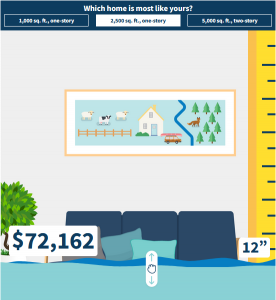 The number of potential causes makes water damage a widespread problem and the damage can be costly to repair without immediate action. Many furnishings and building materials in homes and buildings are porous including carpeting, flooring, subflooring, furniture, wood, drywall, insulation, and more. This means that water will get absorbed into these materials and keep spreading until the damage is addressed. Giving the water time to spread will increase the damage as well as the cost of the water mitigation.
The number of potential causes makes water damage a widespread problem and the damage can be costly to repair without immediate action. Many furnishings and building materials in homes and buildings are porous including carpeting, flooring, subflooring, furniture, wood, drywall, insulation, and more. This means that water will get absorbed into these materials and keep spreading until the damage is addressed. Giving the water time to spread will increase the damage as well as the cost of the water mitigation.
Water damage restoration cost will vary depending largely on the extent of the damage. The national average cost of water damage restoration is $3000 and generally falls between $1200 and $5000. Water damage restoration could cost $350 on the low end and as high as $50,000 if there is black water involved. Another way to look at it is the cost of water damage restoration per square foot. Cleaning up clean water on average costs $3.75 per square foot, $4.50 for grey water, and $7 for black water.
FEMA has a water damage restoration cost calculator on their website that can help you get a more accurate idea of what the restoration would cost for your home depending on the amount of water.

Water Damage Articles
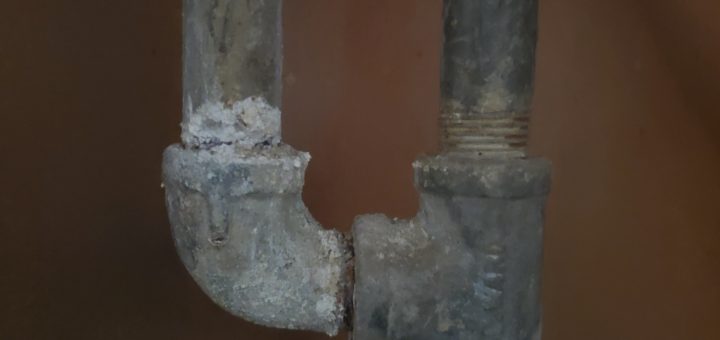
Signs of a Pipe Burst in the Basement
Broken pipes can happen at any time in your home or business. As pipes are usually hidden from plain view, a broken leaky pipe may be difficult to detect and if left unattended it may cause serious damage that can become costly.
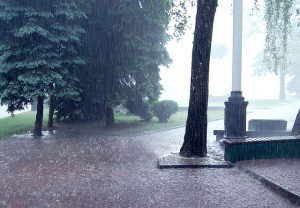
Flood Season Preparation Tips
Preventing a flood from occurring is just about impossible, but limiting the damage it causes to your building materials and belongings is something you can control, follow these tips and take the proper precautions during flood emergencies.
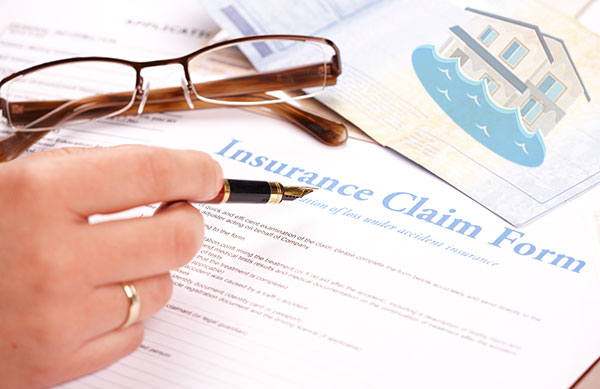
Should I Buy Flood Insurance?
If you live near a lake, ocean, river, or another body of water, then the threat of flooding is especially high. Flood cleanup and restoration can be costly and insurance can be helpful. Learn more about flood insurance, flooding risks, and flood restoration.
